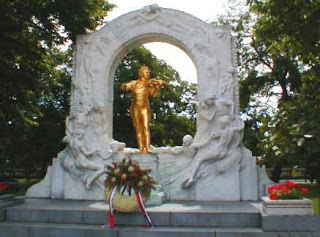
We were staying in St. Moritz, the world famous ski resort for the rich and famous jet set. Strange, because we were neither rich and famous nor members of the jet set- and we don’t ski! No, we were there because it is on the way to a place in the Italian Dolomites where the beguiling Anri woodcarvings are made.We had started to collect these charming sculptures a few years earlier, and Nancy wanted to see how they were produced. I called the main number in Italy, transatlantic from my office in D.C., and asked if we might visit them. When they heard Nancy was in a wheelchair, they flat out refused, concerned she might get injured somehow and that being Americans, we would (naturally) sue them for damages.
I assured them this was not the case, and when I explained about her surviving multiple strokes, and that I was essentially into doing anything I could to increase her enjoyment of life, they were quite taken by such commitment and granted us permission to tour their workshops.
Thus we headed out from our Swiss hotel, headed for Bressanone, Italy.
The roads through the Swiss Alps are well maintained, clearly marked, have ample protection at mountain curves, and are easy to travel. But when you get to Italy, everything I told you about the Alpine Swiss roads is absent in the Italian Alps! The roads are somehow narrower, the curves have no metal retaining barriers, and the drop off the side seems further down and infinitely more dangerous.
As we came down around one sharp curve, driving on the inside lane, that is, the lane against the mountainside, a large tour bus was coming up the mountain in the outside lane. I pulled over as far as I could and stopped, allowing the bus to pass.
The bus passed by me so close I could have sworn the paint on our car was bubbling from the heat of the nearness of it. As it passed by, I glanced up, looking into the bus, and was impressed by the calm expression on the faces of the passengers inside it.
What they could not see, but what was clearly visible in my side view mirror was that the outside rear wheels of the bus were partially off the edge of the road, with a sheer drop of hundreds of feet down the gorge should the bus lose another inch of roadway beneath it.
I was shaking when the bus finally pulled clear around me and I sat there for quite a few minutes before I summoned the courage to continue on.
We had a most delightful time at the Anri wood works- they could not have been more gracious and accommodating, and Nancy could not have been happier.
We stayed longer than I had planned, and as we left Bressanone to return to St. Moritz, it was late in the afternoon.
As mentioned earlier, the roads in Italy are not marked nearly as well as they are in Switzerland, and as a result, I took a wrong turn and ended up going through the wrong mountain pass. Since all the roads do not interconnect, I was forced to turn around and go all the way back to where I could make the correct turn to get back to Switzerland. This mistake cost me two hours of daylight and much more energy than I could afford to spend.
Light was fading fast, and the thought of driving through the Alps at night did not thrill me. In my desperation to get back before nightfall, I kept driving, even though Nancy was getting hungry and both of us needed a bathroom stop.
Once we reached the Swiss border and began our descent, I felt relieved enough that I pulled over at the first little inn we came upon. It was way past our bedtime, and, I think, past the bedtime of the innkeeper and his family. Never-the-less, they welcomed us, fixed up some hot tea, and brought us a huge, steaming bowl of cheese fondue, the best we have ever eaten, before or since.










































